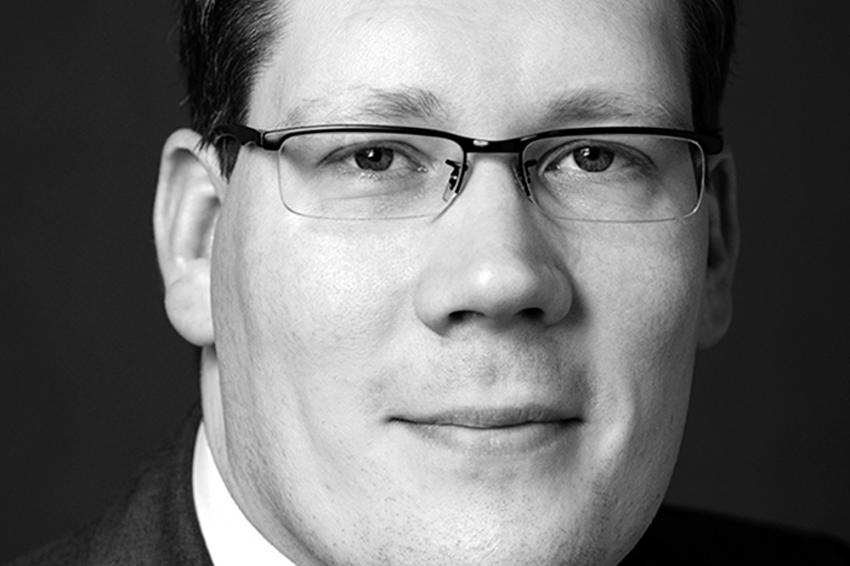The Middle East – More Opportunities than Risks
Saudi Arabia Boasts Cheap Energy and Raw Commodities, Iran Offers Diversified Structures and a Qualified Workforce
The Middle East chemical industry makes good money selling basic chemicals and uses local oil and gas in manufacturing. Hopes are high that the many major investments made by the sector in recent years will pave the way for higher value added products. But there is no sign yet of a resounding success on this front. Martin Erharter, Senior Partner and Global Head Chemicals & Pharma, and Heiko Ammermann, Senior Partner, from Roland Berger, discuss with CHEManager the various prerequisites and obstacles faced in Middle East chemical nations.
CHEManager: Mr. Erharter, which are the key chemical nations in the Middle East region?
M. Erharter: The first are the GCC, the Gulf Cooperation Council states – foremost among them Saudi Arabia, then the United Arab Emirates, Kuwait, Qatar and Oman. And there's Iran. Lebanon has gas production but the chemical industry is less relevant there.
And who are the biggest players in the chemicals market?
H. Ammermann: The biggest by far is SABIC. There is also Saudi Aramco, the big oil company with plans to operate as a producer of basic chemicals, and there's ADNOC in Abu Dhabi. Then we have the big state-owned concerns in Iran, all of which are seriously restructuring their business right now. Some of them are active in everything from oil and gas exploration to the refinery business to fine chemicals production. Kuwait and Oman have national oil companies, too. Most of the private sector chemical companies in the region operate in a totally different league, way below these big players.
What are the main challenges for these companies?
M. Erharter: Many of those companies are in the process of focusing their business models downstream along the value chain and are making huge investments. Take Aramco, for example. They have teamed up with Dow in the Sadara joint venture to invest EUR 20 billion in the creation of the region's biggest integrated chemicals complex. This comes at a time when the Middle East chemical industry can hardly be said to be getting more competitive. On the one hand we have falling oil prices, going hand in hand with a reduction in income for the oil-producing companies. And then we have the rising price of gas, which still makes up 70% of the primary input used in chemical production in the region. Added to that, Saudi Arabian firms in particular are compelled by national regulations to keep value creation within their national borders so as to promote local employment.
H. Ammermann: While we have seen some successes with downstream activities in the Middle East, with local production of standard plastics and fertilizers and so on, many companies are still working within their old business models and operating huge plants with massive investments and small workforces. They are a million miles away from achieving the kind of high-margin production that German fine chemicals or specialty chemicals firms manage. One of the reasons for that, in my view, is the lack of customer industries with supply chains for the Middle East chemical industry to integrate into.
Does that also apply to Saudi Arabia?
M. Erharter: Yes. Saudi Arabia's chemical sector does not have the kind of customer markets that the German chemical industry has in the automotive sector, for example. There is a lot of talk about smart mobility in Saudi Arabia but in reality, people are thinking two steps ahead of where they actually are. Because not only do they lack the customer industries, they are also missing the innovation mindset. Unlike in nearby Israel, for example, where the desire for sustainable R&D processes is strong. You can't fail to be aware of Israel's high-tech firms if you're working on e-mobility today.
H. Ammermann: That's right. They have a successful start-up scene there, too, with a financing landscape similar to the United States. But what's missing in Israel is a strong production base of the kind the German automotive sector has.
You mentioned Iran as one of the Middle East's chemical nations. How would you characterize the structure of Iran's chemical industry, for instance in comparison to Saudi Arabia's?
H. Ammermann: Iran differs from Saudi Arabia in that Iran already had a highly differentiated economy 30 years ago. To stick with our automotive example, Peugeot and Renault cars were being produced there under license. And the chemical industry was fully differentiated, with paint and varnish manufacturers, producers of active pharmaceutical ingredients, and many more besides. The years of sanctions against Iran have created a situation where companies there are behind the times on technology and have a huge investment backlog.
That said, what Iran does boast, then as now, is a range of significant cultural factors, such as a mature university structure and a pool of well-educated engineers. And the Iranians know how a supply chain works. That is why I think we will see a more differentiated chemicals landscape emerge in Iran sooner than in Saudi Arabia.
M. Erharter: The situation in the chemical industry in Iran after the lifting of sanctions is comparable to what it was like in East Germany after the fall of the Berlin Wall, the only difference being that they have not yet sorted out the question of financing in Iran. Saudi Arabia's chemical industry, on the other hand, is more like that of an emerging economy where certain infrastructures and cultural standards still need to be developed. However, the country does have the advantage of an enormous sovereign wealth fund to fall back on.
What are Iran's chances of attracting the investors it needs?
H. Ammermann: There have already been a great many positive declarations of intent between Iranian firms and European companies, especially German ones. But there hasn't been much in the way of actual foreign direct investment yet. And that is unlikely to change any time soon. That's partly down to the political uncertainty in the region, given that companies choosing to operate in Iran risk losing Saudi Arabia, Bahrain, Kuwait and Qatar as markets. Another reason is that Western banks are holding back from any investments for fear of potential US sanctions. And it's not only investments that are being hit by that fear: even long-term supply relations are difficult for companies to establish if their bank is threatening to pull out of the business relationship. Right now there is absolutely no market for bank-financed investments in Iran.
So what kind of potential investors remain?
H. Ammermann: Private equity investments from Europe, China or Russia would be possible. Iranians in exile are also investing in their homeland, so we think there might be a bit of progress here in the next 12 to 18 months. After all, Iran is certainly an interesting market offering much higher growth opportunities after the end of the embargo than other markets in the region.
What would be your advice to German companies looking to get involved in the Middle East?
H. Ammermann: Saudi Arabia offers opportunities for companies with a dependence on low-cost raw commodities and high energy consumption levels. But it's a difficult market for small and medium-size enterprises to get into. Local companies are mostly looking to partner with large firms like BASF and Linde.
An involvement in Iran may be an interesting option for any SMEs not dependent on bank financing and not active in the US market. The country boasts numerous private sector SMEs as potential business partners. And there is a qualified workforce ready and waiting.
M. Erharter: The market opportunities in this region are much greater than the risks. German companies who have been reliable partners in the region over the decades, unlike many UK or North American firms, are in a good position to profit from this potential.






